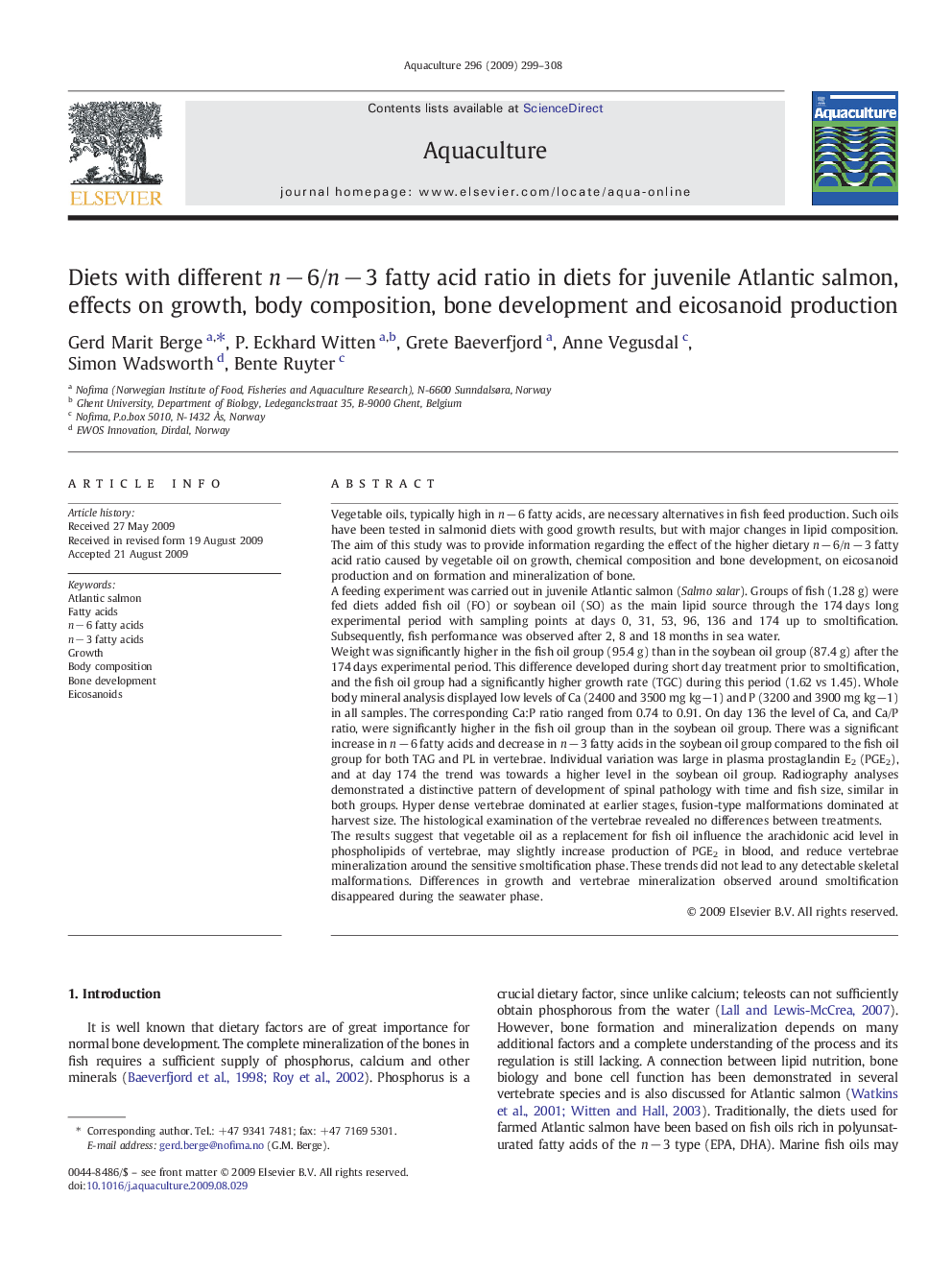| Article ID | Journal | Published Year | Pages | File Type |
|---|---|---|---|---|
| 2423861 | Aquaculture | 2009 | 10 Pages |
Vegetable oils, typically high in n − 6 fatty acids, are necessary alternatives in fish feed production. Such oils have been tested in salmonid diets with good growth results, but with major changes in lipid composition. The aim of this study was to provide information regarding the effect of the higher dietary n − 6/n − 3 fatty acid ratio caused by vegetable oil on growth, chemical composition and bone development, on eicosanoid production and on formation and mineralization of bone.A feeding experiment was carried out in juvenile Atlantic salmon (Salmo salar). Groups of fish (1.28 g) were fed diets added fish oil (FO) or soybean oil (SO) as the main lipid source through the 174 days long experimental period with sampling points at days 0, 31, 53, 96, 136 and 174 up to smoltification. Subsequently, fish performance was observed after 2, 8 and 18 months in sea water.Weight was significantly higher in the fish oil group (95.4 g) than in the soybean oil group (87.4 g) after the 174 days experimental period. This difference developed during short day treatment prior to smoltification, and the fish oil group had a significantly higher growth rate (TGC) during this period (1.62 vs 1.45). Whole body mineral analysis displayed low levels of Ca (2400 and 3500 mg kg−1) and P (3200 and 3900 mg kg−1) in all samples. The corresponding Ca:P ratio ranged from 0.74 to 0.91. On day 136 the level of Ca, and Ca/P ratio, were significantly higher in the fish oil group than in the soybean oil group. There was a significant increase in n − 6 fatty acids and decrease in n − 3 fatty acids in the soybean oil group compared to the fish oil group for both TAG and PL in vertebrae. Individual variation was large in plasma prostaglandin E2 (PGE2), and at day 174 the trend was towards a higher level in the soybean oil group. Radiography analyses demonstrated a distinctive pattern of development of spinal pathology with time and fish size, similar in both groups. Hyper dense vertebrae dominated at earlier stages, fusion-type malformations dominated at harvest size. The histological examination of the vertebrae revealed no differences between treatments.The results suggest that vegetable oil as a replacement for fish oil influence the arachidonic acid level in phospholipids of vertebrae, may slightly increase production of PGE2 in blood, and reduce vertebrae mineralization around the sensitive smoltification phase. These trends did not lead to any detectable skeletal malformations. Differences in growth and vertebrae mineralization observed around smoltification disappeared during the seawater phase.
